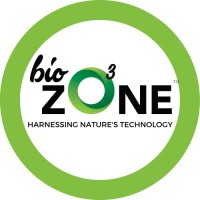
Biozonemanufacturing
Uploaded on Nov 15, 2023
Category
Lifestyle
Clean air is vital for a healthy living environment. Explore the five key methods of air purification for a safer indoor atmosphere in South Africa. High-Efficiency Particulate Air (HEPA) filtration captures particles, activated carbon filtration adsorbs gases, UV germicidal irradiation neutralizes microorganisms, ionic air purification attracts particles, and ozone generators break down pollutants. Understand these methods to create a comprehensive approach to indoor air quality and find effective air purification solutions in South Africa.
Category
Lifestyle
5 Air Purification Methods
The 5 Methods of Air Purification
Clean air is essential for a healthy living environment, and with increasing
concerns about air quality, the demand for effective air purification methods has
grown. In this document, we will explore five key methods of air purification, each
designed to address specific pollutants and contribute to a cleaner and safer indoor
atmosphere.
Biozone Manufacturing Page 1
High-Efficiency Particulate Air (HEPA) Filtration:
HEPA filtration is one of the most widely used methods for removing airborne
particles. These filters are designed to capture particles as small as 0.3 microns
with high efficiency, including dust, pollen, mold spores, and pet dander. HEPA
filters are commonly found in air purifiers and vacuum cleaners, providing an
effective means of reducing particulate matter in indoor spaces.
Activated Carbon Filtration:
Activated carbon filters excel at adsorbing gases, odors, and volatile organic
compounds (VOCs). These filters are created by treating carbon with oxygen,
opening up millions of tiny pores between the carbon atoms. This large surface
area allows the filter to trap a wide range of chemicals, making it a valuable
component in air purifiers for eliminating unwanted odors and harmful airborne
substances.
Biozone Manufacturing Page 2
Ultraviolet (UV) Germicidal Irradiation:
UV germicidal irradiation is a powerful method for neutralizing bacteria, viruses,
and other microorganisms. In this process, ultraviolet light damages the DNA and
RNA of these organisms, preventing them from reproducing and rendering them
harmless. UV-C light is commonly integrated into air purifiers, HVAC systems,
and portable devices to enhance overall air quality by eliminating harmful
pathogens.
Ionic Air Purification:
Ionic air purifiers use charged ions to attract and remove airborne particles. These
devices release negatively charged ions into the air, which attach to positively
charged particles like dust and allergens. Once the particles are charged, they
become attracted to positively charged plates or other surfaces within the purifier,
effectively removing them from the air. Ionic air purification is particularly
effective for smaller particles, but it may produce ozone as a byproduct, which can
be a consideration for individuals with respiratory sensitivities.
Biozone Manufacturing Page 3
Ozone Generators:
Ozone generators produce ozone molecules to neutralize pollutants and odors in
the air. Ozone works by oxidizing and breaking down organic and inorganic
substances, providing a powerful method for air purification. However, caution
must be exercised with ozone generators, as high levels of ozone can be harmful to
human health. These devices should be used in well-ventilated areas and according
to manufacturer recommendations.
Biozone Manufacturing Page 4
Conclusion:
In the quest for cleaner indoor air, understanding the various methods of air
purification is crucial. Depending on specific needs and concerns, a combination of
these methods may be employed to create a comprehensive air purification system.
Regular maintenance and adherence to safety guidelines ensure that these
technologies contribute positively to the overall well-being of indoor
environments. For reliable air purification solutions in South Africa, explore the
options that best suit your requirements.
Biozone Manufacturing Page 5

Comments